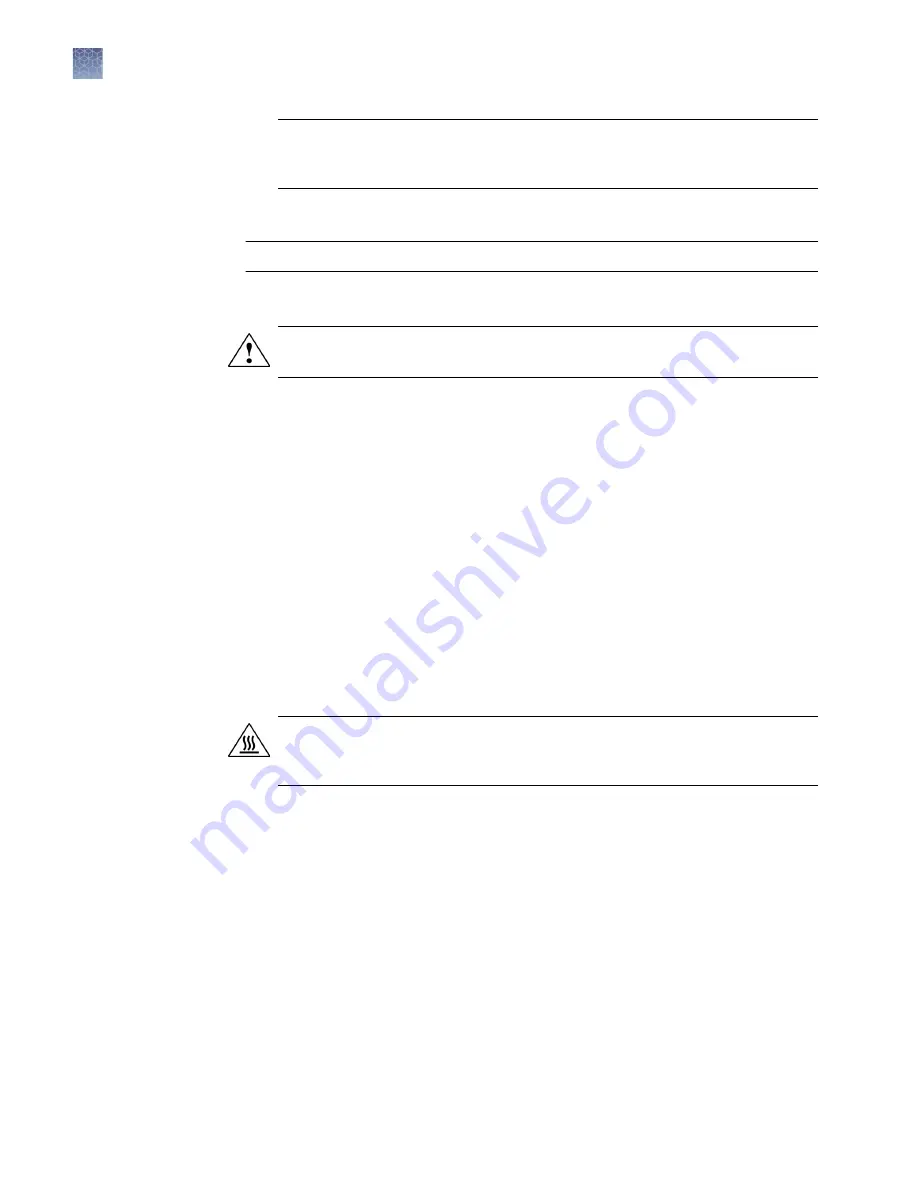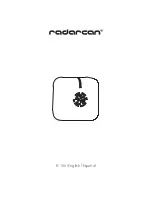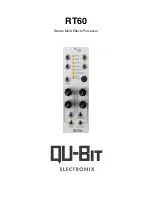
IMPORTANT!
Keep the bottom of the plate clean. Fluids and other
contaminants on the bottom of the plate can contaminate the sample block and
cause an abnormally high background signal.
Run the dilution plate
IMPORTANT!
Do not run the dilution plate as a calibration.
1.
Load the plate into the instrument.
CAUTION!
The instrument should be used by trained operators who have been
warned of the moving parts hazard.
2.
Set up a genotyping plate file on the instrument (see “Create and run a plate
from a system template or a saved plate file” on page 46).
To use a system template for genotyping, see “System template file names” on
page 33. Select a genotyping method that is compatible with the Master Mix.
3.
In the
Method
tab, set the hold to 60°C for 2 minutes.
4.
In the
Plate
tab, enter the dilution series information for the appropriate wells.
5.
Tap
Start run
.
6.
When the run is complete, transfer the data files for analysis (see “Transfer a
data file immediately after a run” on page 76 or “Transfer data files at a later
time” on page 76).
7.
Unload the plate from the instrument.
CAUTION!
PHYSICAL INJURY HAZARD.
During instrument operation, the
plate temperature can reach 100°C. Allow it to cool to room temperature before
handling.
Note:
Use Smart Help if the instrument does not eject the plate (see “Request
technical support with Smart Help” on page 159).
Determine the optimal dye concentration
Use the Connect platform or the desktop software to review the dye signal data and
select the dilution to use for dye calibration.
1.
In the
Results
tab, select
Raw data plot
.
This plot displays the raw fluorescence signal of each optical filter, for individual
wells.
Note:
The raw data plot cannot be viewed on the instrument touchscreen.
Chapter 7
Calibrate and verify instrument performance
Calibrate custom dyes
7
100
QuantStudio
™
6 Pro and 7 Pro Real-Time PCR Systems User Guide
















































